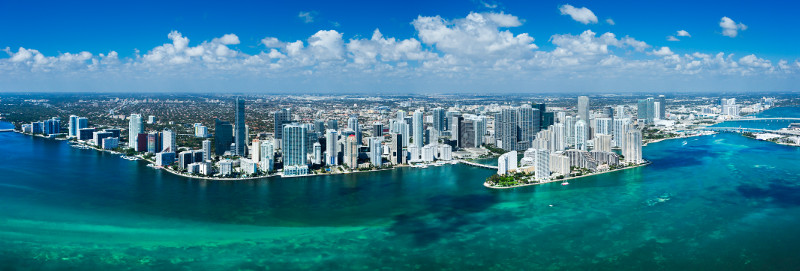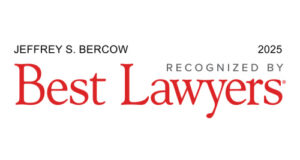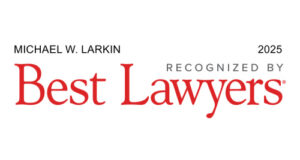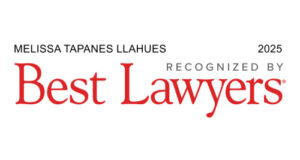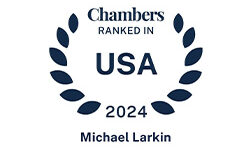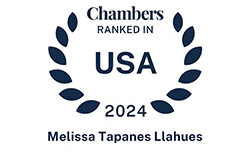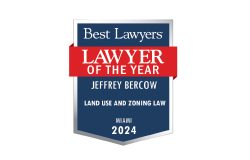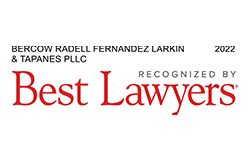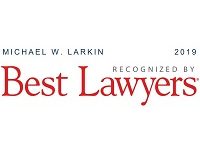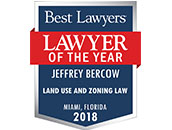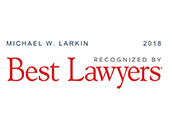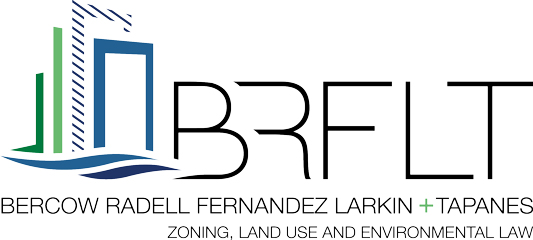DBR: Law Partner Melissa Tapanes Llahues on Being ‘Part of the Story of Miami’
January 13, 2020Melissa Tapanes Llahues’ parents knew she would be an attorney. As a child she showed fitting personality traits for the job.
“I was told that I had a fire in my belly,” she said.
If you’ve heard Tapanes argue, then you know exactly what her family meant. The granddaughter of a Cuban political prisoner under Fidel Castro’s regime is thorough, firm and confident.
She is a land-use and zoning attorney at Bercow Radell Fernandez Larkin & Tapanes in Miami, becoming its latest name.
“I would never consider practicing anything else. I like to be part of the story of Miami,” she said.
Her career roots trace to her Cuban background and her love of Miami. She fights to uphold her clients’ property rights, which were something lost under the Castro regime.
As a Miamian, Tapanes is proud to play a role in shaping the city. She sees it as the epitome of the American dream as immigrants build new lives.
“I feel vested to this community and its growth,” she said.
Tapanes represents property owners and developers before federal, state and municipal agencies as well as communities. On a recent evening, she organized a Hialeah neighborhood meeting on a plan for 700 residential units on 29 acres on Red Road.
Before one of her client’s projects is set for a city hearing, “I prefer to meet with them [neighbors] so at least they know,” Tapanes said. “I’d rather take the time to meet with them upfront, have them understand what the project is, see what their concerns are.”
She weaves Miami-Dade’s fabric in less visible ways. She ensures projects comply with comprehensive plans guiding city growth and works on subdivision plats.
“The subdivision process is what creates the official map of the city, and that subdivision has to be consistent with the zoning regulations and land use,” Tapanes said. “That’s what we call responsible planning. That is what I do.”
Another behind-the-scenes role with sweeping implications is hammering out code amendments to guide what neighborhoods will look like.
‘Ground Zero’
“The reason why I love my practice is we are ground zero for developing the city of Miami,” she said.
If you’ve been in downtown Miami recently, you experienced the results of some of this work.
Tapanes worked with the city to do away with distance-separation requirements for alcohol-serving establishments on Flagler Street. More bars have opened, and foot traffic is up. The first downtown brewery is on tap.
“The Miami Chapter 4 had become very difficult to even read as a lawyer. It was difficult for the city to enforce,” she said. “All of a sudden we were talking to the city saying, ‘Wouldn’t it be great to have a code you could read and enforce and people would understand?’ ”
Tapanes is hired by private property owners and in working for them identifies bigger issues, prompting her to work along with the city and stakeholders on code amendments.
When there’s a problem, “It becomes, ‘OK, let’s amend the code to make it make sense,’ ” she says.
Tapanes represents Moishe Mana, downtown Miami’s biggest property owner who envisions the “Silicon Valley of Latin America” led by startups and blockchain companies.
Don’t expect futuristic skyscrapers at Mana Common because he wants to keep the character of his buildings, which represent an eclectic collection of 20th-century architecture. Some structures require major upgrades, and some will be rebuilt, Tapanes said. Many aren’t sea-level resilient with basement mechanical equipment.
New buildings will keep interesting facades and maintain their low-scale, small footprints, she said.
This poses a Catch-22: The city allows old downtown buildings to skip modern parking requirements. Because some of Mana’s buildings will be demolished, they no longer will enjoy the exemption. But complying with modern requirements might be impossible since the buildings will remain small.
“If you construct a new building, you’ve got to comply with today’s code,” Tapanes said. In Mana’s case it “means you can no longer rebuild the same building. That’s the issue.”
This stems from the Miami 21 code allowing old buildings to be replaced by dense high-rises but being less amenable to the type of adaptive reuse Mana plans.
Tapanes is meeting with the city planning staff to hammer out a solution.
“Moishe Mana would not be able to comply with Miami 21 and redevelop these buildings unless we are able to come up with some incentives, understanding there is a disconnect between what is current Miami construction and what is Miami 21,” she said. “We are trying to bridge that gap.”
Miami 21 already has proved controversial as the City Commission unanimously voted Dec. 12 for a task force to examine it and recommend changes.
Gray Areas
New construction is a divisive affair. Opponents often raise traffic and environmental concerns and cite the potential loss of community character. The other side says development is an economic boon adding much-needed homes and businesses.
Tapanes doesn’t seem to see things as so black and white.
For one, she is for Mana’s low-scale vision for Flagler.
“I love new projects, but there’s a place for them,” she said. “Part of what makes the Mana Common project exciting is you don’t want to scrap an entire neighborhood. If we just demolish all of Flagler Street and build 60-story towers, Miami will look very different. If you look at developments long-term, that may be where we go, but that’s not necessarily sustainable on day one.”
She hardly is against development. In Hialeah, she worked with the city to establish the Hialeah Market Station Transit Oriented Development District. It opened the door for up to 15-story buildings and mixed uses within a half mile of train stations, including the Tri-Rail Hialeah Market station at 1200 SE 11th Ave.
The transit-oriented development concept bets on residents and businesses wanting to be near mass transit stops to avoid traffic congestion.
Creative alternatives are needed to deal with the other big issue in South Florida besides traffic: sea-level rise.
“Change is inevitable. It’s also in order to deal with climate change, there needs to be change. We need to make Miami sustainable and resilient to our future, whatever the timing of that may be.”
Civic Service
Tapanes’ affinity for Miami-Dade is evident through her civic service.
She just finished a decade long term as executive director of Latin Builders Association Inc. and was one of 13 appointed to the Miami Charter Review and Reform Committee. Tapanes chairs Florida International University’s President’s Council for the 2017-2020 term.
She started at Bercow Radell in 2002 and became shareholder in 2013, the firm’s first female partner.
This was “a remarkable feat for someone her age,” managing partner Jeffrey Bercow said in a news release about Tapanes becoming name partner. “She is known throughout the Miami community for her drive, commitment, team leadership and problem-solving skills.” — Lidia Dinkova
Published January 3, 2020 in the Daily Business Review
